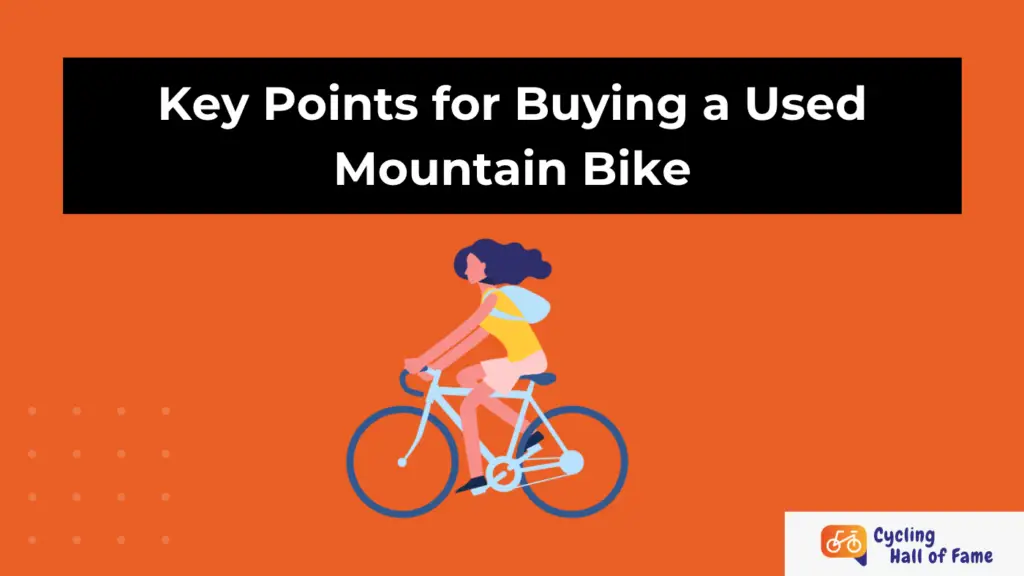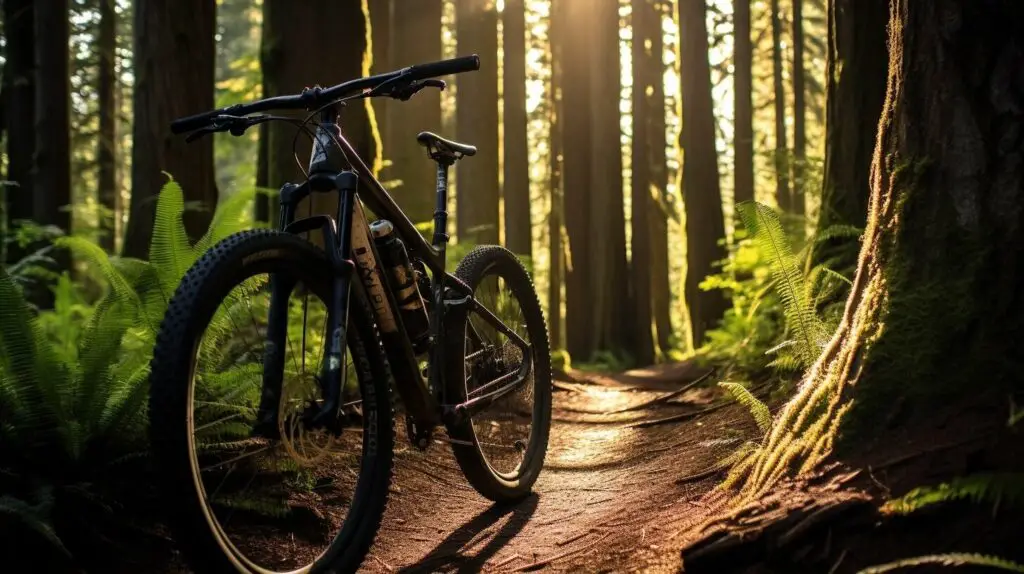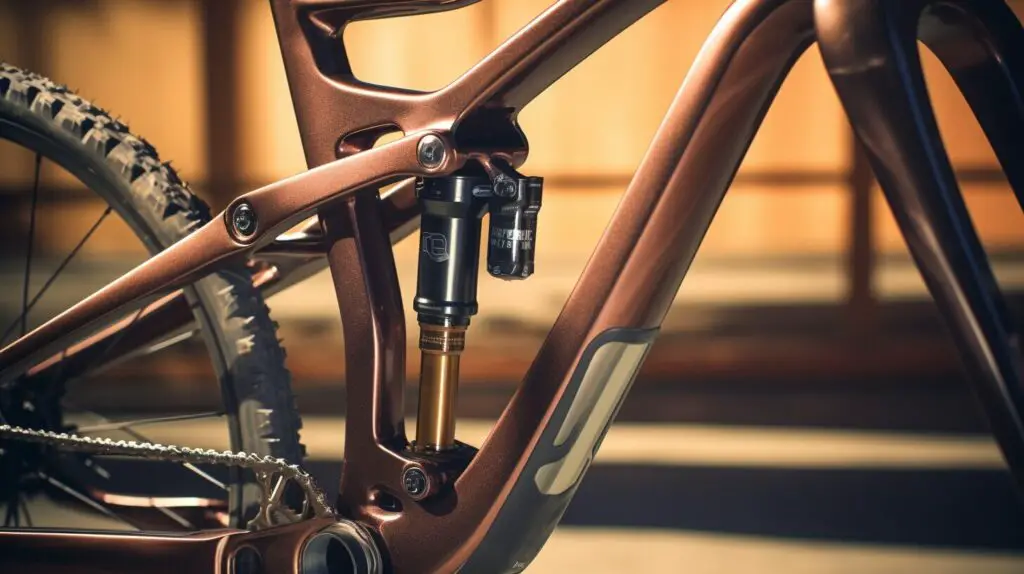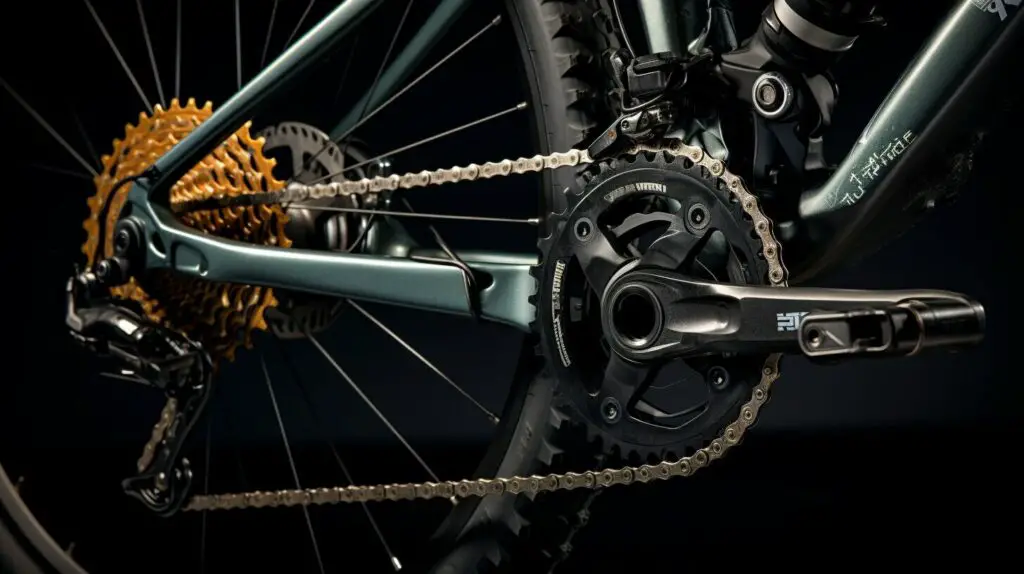If you’re in the market for a pre-owned mountain bike, there are important factors to consider to ensure you make a wise investment that meets your needs.
Buying a used mountain bike can save you money and offer a great opportunity to own a quality bike. However, it’s crucial to take the time to research and examine the bike thoroughly to avoid potential issues down the line.
In this guide, we will go through the key points you should consider before purchasing.
We’ll guide you on everything from determining your needs and riding style, researching and familiarizing yourself with different brands and models, examining the frame condition and material, and assessing the drivetrain and components.
We’ll also cover test riding and inspecting the bike, considering the price and negotiation, and address common questions and concerns you may have when buying a used mountain bike.
Advertising links are marked with *. We receive a small commission on sales, nothing changes for you.
Key Takeaways

- Identify Riding Preferences: Understand your riding style, frequency, skill level, and preferred terrain to guide your purchase of a used mountain bike.
- Conduct Thorough Research: Familiarize yourself with various brands and models, consulting online reviews, forums, and experienced riders for insights.
- Examine Bike Condition: Inspect the bike’s frame condition and material carefully, as any damage can significantly affect the bike’s safety and performance.
- Assess Key Components: Evaluate the suspension system, drivetrain, and other components meticulously to ensure their condition matches the asking price.
- Test Ride and Negotiate: Conduct a test ride to assess the bike’s handling and performance, negotiate price based on condition, and consider a professional inspection for reassurance.
Determine Your Needs and Riding Style
Before buying a used mountain bike, it’s essential to determine your needs and riding style. This will help you find a bike that fits your preferences and requirements.
Consider factors such as terrain, riding frequency, and skill level.
Terrain: If you plan to ride on more technical terrains such as rocky trails, a full-suspension bike may be a better fit. On the other hand, if you’re mainly riding smoother trails or roads, a hardtail bike may suffice.
Riding frequency: If you’re a frequent rider, you may want to invest in a higher-quality bike that can withstand regular use. If you only ride occasionally, a lower-priced option may be suitable.
Skill level: Consider your skill level when selecting a used mountain bike. If you’re a beginner, you may not need all the features of a high-end bike. But if you’re an experienced rider, you may require a bike with more advanced capabilities.
By considering these factors, you can better determine which used mountain bike options will work best for you. This will increase your chances of a successful purchase that you can enjoy for years.
Determining Your Riding Style
If you’re unsure of your riding style or need further guidance, resources are available to help you.
Local bike shops can offer insight into your area’s terrain and types of trails. They may also have demo bikes available for you to test ride. Online mountain bike communities and forums can also provide helpful information and advice.

Remember, determining your needs and riding style is a crucial step in buying a used mountain bike.
Doing so lets you narrow down your options and find a bike that suits your preferences and budget.
Research and Familiarize Yourself with Different Brands and Models
When buying a used mountain bike, it’s important to research and become familiar with various brands and models.
Not all bikes are created equal, and different brands and models can vary significantly in quality, durability, and performance. By doing your research ahead of time, you’ll be better prepared to make a successful purchase.
One of the best ways to research different mountain bikes is to consult online reviews and forums. Many websites and online communities are dedicated to discussing mountain bikes, and they can be a great resource for learning about different brands and models.
You can consult with experienced riders, friends, or colleagues who may have valuable insight into different brands and models.
When researching different brands and models, consider factors such as the bike’s intended use, the terrain you’ll be riding on, and your level of skill and experience. Some bikes are designed for specific types of riding, such as cross-country or downhill, while others are more versatile and can handle a variety of terrain.
Additionally, some bikes may be better suited for beginners or more experienced riders.
Once you’ve narrowed down your options and better understand the different brands and models available, you can start comparing features and specifications.
Consider the frame material, suspension system, drivetrain, and components. By doing your research and familiarizing yourself with different brands and models, you’ll be better equipped to make an informed decision and find the right used mountain bike for your needs.
Examine the Frame Condition and Material
One of the most critical factors to consider when buying a used mountain bike is the frame condition and material. The frame is the foundation of a bike, and any issues with it can be expensive and dangerous to repair.
During your inspection, look for cracks in the frame, which can occur due to accidents or stress. Dents, especially in the bottom bracket area, can also be a sign of damage. Avoid buying a bike with significant frame damage, as it can compromise the bike’s safety and stability.
The material used for the frame can also affect the bike’s performance and durability. Aluminum and carbon fiber are popular materials that offer strength and durability while remaining lightweight. Steel frames are also sturdy, but they tend to be heavier and less common in modern mountain bikes.
Pro Tip: If you’re unsure about the condition of a bike’s frame, consider taking it to a professional bike shop for an expert opinion. They can assess the frame for damage and provide an estimate for any necessary repairs.
Frame Material | Pros | Cons |
|---|---|---|
Aluminum | Lightweight, sturdy, affordable | Can be stiff, can transfer vibrations |
Carbon Fiber | Lightweight, strong, absorbs vibrations | Expensive, susceptible to impact damage |
Steel | Sturdy, absorbs vibrations | Heavy, less common in modern bikes |

“The condition of the frame is crucial when purchasing a used mountain bike. Any issues with the frame can make the bike unsafe to ride and lead to expensive repairs in the future.”
Check the Suspension System
One of the most critical components of a mountain bike is the suspension system. It can make a significant difference in your riding experience and comfort level.
When assessing a used mountain bike, it is essential to examine the suspension system thoroughly.
There are two primary types of suspension systems: hardtail suspension and full suspension. A hardtail suspension system refers to a bike with no rear shock absorber.
On the other hand, a full-suspension bike has both front and rear shocks. Both suspension systems have their advantages and disadvantages, and it is essential to determine which one is suitable for your specific needs and riding style.
During the bike inspection, check the suspension system for any signs of damage or wear and tear. If you notice oil leaks or worn-out bushings, it is advisable to have the bike serviced or ask for a lower price.
Evaluating the suspension’s responsiveness and adjustability is crucial by taking the bike on a test ride. Look out for any abnormal noises or awkward movements during the ride.
These could indicate that the suspension system is malfunctioning and requires repairs or replacement.
Remember that a well-maintained suspension system can significantly impact the bike’s performance and durability. Proper maintenance includes regular cleaning, oiling, and lubrication.
It is, therefore essential to inquire about the previous owner’s maintenance habits before purchasing.
“A well-maintained suspension system can significantly impact the bike’s performance and durability.”
Assess the Drivetrain and Components
The drivetrain and components are critical components of a mountain bike, and assessing their condition is essential when buying a used mountain bike. Scrutinize the shifting quality, brakes, and chain.
Begin with an inspection of the chain’s wear and tear. Over time, the chains develop minor gaps between links, which can hinder shifting accuracy. If the chain is too worn, you may have to replace the entire drivetrain, so be cautious when assessing the chain’s condition.
Next, examine the cassette. Worn cassette makes it challenging to pedal uphill, making it wear and tear on the chain and other components.
Test the shifts’ accuracy on both front and rear gears with the bike in your hands. Every gear should change seamlessly without any hiccups, and the bike should continue to roll smoothly.
Make sure to inspect the brake’s condition. Worn brake pads, slack brake lines, and defective brake handles pose a significant hazard and require immediate attention. Be sure to inspect every brake wheel for wear and tear.
A broken lever system or worn-out brake pads would cost you considerable money to fix.
Lastly, you must scrutinize the derailleur. Initially, the derailleur should align with every gear seamlessly, ensuring smooth changes. Listen for clicking noises while pedaling, and look out for abrupt adjustments.
The derailleur may need repairs or replacement if you feel strange clicking, grinding, or swaying.
If the drivetrain and components’ state appears to be in good working order, you may have discovered your ideal used mountain bike.
But, if a significant component requires replacement, estimate how much it will cost and negotiate with the seller accordingly.

Test Ride and Inspect the Bike
Once you have narrowed down your options and found a used mountain bike that meets your requirements, it’s crucial to test ride and inspect the bike thoroughly. Don’t rush into purchasing without first ensuring the bike is safe, comfortable, and suitable for your needs.
Pay attention to the bike’s handling and performance during the test ride. Make sure it feels solid and stable, and that the brakes are responsive. Take the bike through its paces, testing it on various terrains and inclines.
If something doesn’t feel right, don’t hesitate to ask questions or request additional information from the seller.
When inspecting the bike, look for any visible signs of damage or wear and tear. Check the frame for cracks or dents, and examine the wheels and tires for punctures or other issues.
It’s also important to assess the drivetrain and components, including the chain, cassette, derailleur, and brakes. Look for signs of rust, corrosion, or other damage that could affect the bike’s performance or safety.
If you’re not confident in your ability to evaluate the bike independently, consider having it inspected by a professional mechanic. They can provide an expert opinion on the bike’s condition and identify any potential issues that you may have missed.
Remember that the test ride and inspection are your opportunity to ensure that the bike is worth the investment and will meet your needs. Don’t hesitate to ask questions and request additional information if you need it.
Consider the Price and Negotiation
When buying a used mountain bike, it’s essential to consider the price, as it can be a significant factor in your decision-making process.
However, remember that the price should not be the only determining factor. You need to ensure that the bike meets your needs and is in excellent condition.
Before making an offer, research the market prices for similar bikes. This research will help you to make a better offer, thus improving your chances of a successful purchase.
Additionally, it would help if you were prepared to walk away if the seller is unwilling to negotiate or the price is too high.
In some cases, you may be able to negotiate a lower price.
For example, suppose the bike has some cosmetic damage or requires routine maintenance or repairs.
In that case, you may be able to negotiate the price downward. Similarly, if the bike has been sitting unused for a prolonged period, it may need significant maintenance work, which can also impact the price.
When negotiating, it’s essential to remain polite and reasonable. Remember that the seller may have an emotional attachment to the bike. Make a fair offer based on the bike’s condition and market prices, and don’t be afraid to walk away if you can’t reach an agreement.
Key takeaway: When buying a used mountain bike, consider the price, but don’t let it be the only determining factor. Research market prices, be prepared to negotiate, and don’t be afraid to walk away if necessary.
Frequently Asked Questions (FAQ)
Here are some commonly asked questions and concerns about buying a used mountain bike.
Is buying a used mountain bike a good idea?
It can be a great idea, as long as you take the time to research and inspect the bike thoroughly. By purchasing a used bike, you can often get a higher quality bike for a lower price than buying new.
How can I ensure the bike is in good condition?
Be sure to inspect the frame, suspension system, drivetrain, and components. Test ride the bike to ensure it suits your needs and riding style. Consider taking the bike to a professional mechanic for an inspection if possible.
What should I do if I find a problem with the bike after purchasing it?
If the issue is something minor, such as an adjustment needed on the brakes, you can often fix it yourself. However, if there is a major issue with the bike, it’s important to contact the seller as soon as possible to discuss your options. If you purchased the bike from a reputable seller, they may offer a warranty or return policy.
Where can I buy a used mountain bike?
There are several options for purchasing a used mountain bike, including online marketplaces, local bike shops, and bike rental companies. Be sure to do your research and ensure the seller has a good reputation before making a purchase.
Is it possible to negotiate the price of a used mountain bike?
Yes, it is often possible to negotiate the price of a used bike. However, be sure to research beforehand and have a good idea of the bike’s market value. Also, be prepared to walk away if the seller is unwilling to negotiate or the bike is not in good condition.

Hi dear visitor! I’m Sebastian, a bike maniac who loves to spend a lot of time on two wheels in nature (I love white chocolate, so I absolutely need a calorie-burning balance that’s fun to boot ). Blogging is my second great passion. That’s why cyclinghalloffame.com regularly features new bike-related content.
Advertising links are marked with *. We receive a small commission on sales, nothing changes for you.
